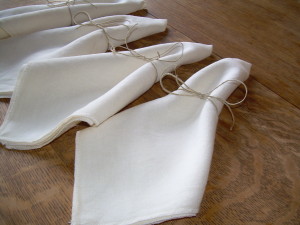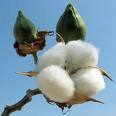Organic Fabrics – What are They and Why Should We Use Them?
We are all familiar with the term “organic” when it comes to food. But do you know what it means for a fabric to be organic? And why should we care?
Organic and eco textiles cover a wide range of natural and recycled fibers. Grown without the use of pesticides, herbicides, or artificial fertilizers, organic fabrics are gaining popularity as a way to help protect our environment, health, and happiness.
Why Go Eco? Here are some quick facts:
1.Growing conventional cotton uses 22.5 percent of all the insecticides used globally
2.Growing enough cotton for one t-shirt requires 257 gallons of water
3.The bleaching and then dyeing the resulting fabric creates toxins that flow into our ecosystem
4.The use of rayon for clothing is contributing to the rapid depletion of the world’s forests
5.Petroleum-based products are detrimental to the environment on many levels
6.Conventional cotton represents 10% of world agriculture and uses 25% of the world’s pesticides (OTA)
7.It takes 1/3 of a pound of chemicals to make one conventional cotton t-shirt!
8.7 of the top 15 chemicals used in conventionally grown cotton are classified as known or suspected carcinogens by the Environmental Protection Agency (EPA)

Eco-friendly soft furnishings do make a difference. Blinds and curtains made from artificial materials may contain PVC and petrochemicals. Draperies made from synthetic fabrics also may contain dyes and treatments that consist of petrochemicals, formaldehyde and acids. Bedding, table linens and slipcovers are commonly made from conventional cotton and synthetic fabrics like polyester. The main raw material used to produce polyester is oil- oil is a non-renewable resource so polyester production is not sustainable. Polyester is also not biodegradable, meaning that polyester fibers that end up in a land fill will remain there for a very long time.

What’s wrong with cotton?
I would like to talk about one of the world’s largest crops that we are all familiar with, cotton. We have long been told of cotton’s many benefits and we assume because it’s natural, it must be good. Think again.
Cotton is a huge industry – the largest producers of cotton, currently (2009), are China and India, with annual production of approximately 34 million bales and 24 million bales, respectively; most of this production being consumed by their respective textile industries. The largest exporters of raw cotton are the United States, with sales of $4.9 billion, and Africa, with sales of $2.1 billion. The total international trade is estimated to be $12 billion (taken from Wikipedia, 2011). No wonder the cotton industry wants us to believe that this fibre is wonderful!

Now here are some facts about this crop that conventional cotton growers don’t want you to know.
Although cotton only occupies five percent of cultivated land in India, it accounts for more than half of the total pesticides used in farming there. The cost to the country has not just been environmental.
“Farmers growing transgenic cotton borrow money from moneylenders to buy chemical fertilizers, pesticides and seeds. In case of crop failure, due to adverse conditions, like no rainfall and pests, the farmer is not in a position to give the money back. Many feel forced to commit suicide”. In October and November, 45 farmers committed suicide here. Most of them drank pesticide. It is thought more than 17,500 farmers killed themselves between 2002 and 2006.*
Agriculture for conventional cotton is responsible for approx 25% of the insecticides and approx 10% of all pesticides used worldwide. Some of these chemical used are the most toxic in the world. 5.5 kilos of chemicals are used for one acre of cotton grown. This translates into half a kilo of chemicals used to make one set of bed sheets!
The chemicals can wash off the plants onto the earth and into groundwater, causing land and water pollution. The health of the farm workers of these crops are at risk. In fact, approximately 20,000 farm workers die each year from pesticide poisoning, according to the World Health Organization.
Agriculture for conventional farming also uses large amounts of water, typically from areas which suffer from drought seasonally. 5.5 kilos of chemicals are used for one acre of cotton grown. Half a kilo (2.2 lbs), of chemicals is used to make one set of bed sheets made from 100% cotton.
Now, for the good news…
More and more people are aware of the harmful effects on the environment that conventional cotton crops have, and of the potentially harmful health effects of wearing, sleeping on, sitting in, and breathing conventional cotton. As the demand for organic cotton has grown, so has the production. Organic farming reduces the mass use of pesticides, chemicals and water, although it does still require a great deal of water to grow organic cotton.
As our populations continue to grow andas developing countries enter the middle class, demand for textiles will continue to grow. To meet this demand without sacrificing our health and the health of our planet, we simply must find sustainable textile solutions. Those sustainable solutions are there in the form of organic cotton, organic wool, hemp, tencel, silk, bamboo, etc. It is up to us to make the right choice.
Sources: www.the-eco-market.com, *euronews, Jan 22, 2010
Related articles:
Why NikkiDesigns Uses Organic Fabrics
What are Organic Soft Furnishings?
Preparing a Nursery – Why Organic is Better for your Baby
Nikki
